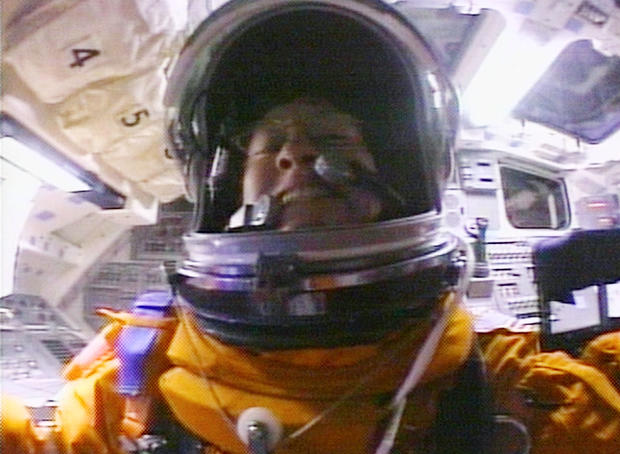

While a NASA study later showed a shuttle rescue mission was possible in theory, no one believed the agency would have launched another crew without first knowing what had happened to Columbia. The shuttle was not equipped with a robot arm, tools or materials to repair major heat shield damage, and the MMT never considered a high-risk emergency spacewalk to inspect the damage site. NASA's mission management team was criticized for dismissing the foam strike based on what turned out to be a flawed engineering analysis. The Columbia disaster, like Challenger before it, triggered agency-wide soul-searching as the accident investigation proceeded.

The wing eventually either folded over or broke away from the fuselage, throwing the ship out of control. The impact blasted a hole in the mockup's leading edge, conclusively proving the lightweight insulation could cause catastrophic damage in a worst-case scenario.Īnd that's exactly what happened to Columbia.ĭuring re-entry, super-heated air rushed through a breach in the left wing leading edge, cutting through sensor wiring, melting internal spars and burning into the left landing gear wheel well. In a dramatic test, engineers used an air cannon to fire a piece of external tank foam at a wing leading edge mockup at the same angle and velocity as the one that damaged Columbia. Over the days, weeks and months that followed, the Columbia Accident Investigation Board uncovered a now-familiar history of external tank foam insulation problems, management miscues and poor internal communications that contributed to the mishap. It would take another two-and-a-half minutes or so for the harsh reality of Columbia's demise to reach the Kennedy Space Center where family members, NASA managers, the ground support team, reporters and photographers were standing by for the shuttle's homecoming. Columbia broke up over Texas during re-entry on February 1, 2003, killing all on board. Anderson, all mission specialists and Ilan Ramon, payload specialist representing the Israeli Space Agency. Husband, mission commander Kalpana Chawla, mission specialist and William C. The crew of Space Shuttle Columbia's mission STS-107. All seven astronauts, unconscious moments after the crew cabin lost pressure, were killed by blunt force trauma when the cabin came apart in the hypersonic airflow. It was 8:59:32 a.m.Īs engineers would later learn, Columbia veered out of control in the seconds that followed and broke apart 38 miles above central Texas while traveling at 18 times the speed of sound.

But again, the transmission was interrupted. "And Columbia, Houston, we see your tire pressure messages and we did not copy your last," astronaut Charles Hobaugh called up from Houston. Husband called down to mission control, presumably to ask about the tire pressure, but his transmission was cut off. 5 minutes and 45 seconds after that initial reading was stored in the data recorder - the first indication of trouble showed up in telemetry reaching flight controllers at the Johnson Space Center in Houston: a loss of temperature readings from hydraulic lines in Columbia's left wing.įour minutes later, Columbia's backup flight computer displayed a message in the cockpit indicating a loss of left main landing gear tire pressure readings.
#Feb 1 2003 space shuttle columbia windows#
Using a hand-held video camera, astronaut Laurel Clark recorded the pink glow out Columbia's cockpit windows as the shuttle began encountering the heat of re-entry high above the Pacific Ocean. Over the next 12 minutes, an on-board data recorder would track a cascade of alarming sensor readings and failures on the left side of the spacecraft that indicated a rapidly escalating catastrophe as the blazing heat of re-entry engulfed the ship.īut it initially played out behind the scenes in the ship's flight computers, which waged an increasingly desperate struggle to keep Columbia on track for a planned landing at the Kennedy Space Center in Florida where friends and family were waiting.Īnd so, at 8:53:26 a.m., Columbia crossed the coast of California, right on schedule, at an altitude of 44 miles while traveling 23 times the speed of sound. EST - a sensor in the space shuttle Columbia's left wing first recorded unusual stress as the orbiter and its seven crew members headed back to Earth to close out a successful 16-day science mission. Twenty years ago this Wednesday - on Feb. From the archives: Watch CBS News coverage of the Space Shuttle Columbia disaster on Feb.


 0 kommentar(er)
0 kommentar(er)
